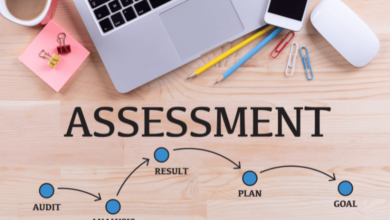HR Licence Training: Mastering Safety Features (Sydney)

While you were making that longing gesture towards the driver cabin of an HR truck cruising down the open road, have you ever wondered about the power behind the wheels? The possibility of earning a great salary and independence is an attractive side of driving big rigs, but the responsibility drivers should take when driving long-distance is enormous. The Sydney authority welcomes a lot of attention from HR licence holders since they are huge behemoths. Sydney HR-certified training that covers safety and control helps the most as the drivers learn all the practical things, know the roads better and minimise the danger of colliding.
Crashes of trucks and trucks on roads in many cases are tragic, with very severe results, injuries, and even death. The far-reaching effects of such events do not touch only the witnesses and the direct parties adversely. As such, challenges in traffic flow, business processes, and even the mental well-being of drivers are among the most significant consequences of roadworks.
Luckily, modern HR trucks nowadays have a full range of highly sophisticated safety systems, which allow for higher safety levels and reduction of accidents. The best HR licence training centres in Sydney should cover these features in detail, thus sparring the drivers from the dangers of misuse and improper understanding of what the features can and cannot be.
- Anti-lock braking system (ABS) and electronic brakeforce distribution (EBD): These features operate as a team to prevent wheel skid that could result in locking which might lead to loss of control of the vehicle which could result in accidents even when emergency brakes are applied.
- Lane departure warning (LDW) and lane change assist (LCA): These driver-assisted systems identify lane markings leveraging any of these two: cameras or sensors. LDW sensors detect any unintentional drifting out of the lane and warn the driver, as well as LCA which may send visible or audio warning signals to the driver for impeding vehicles while making lane changes.
- Electronic stability control (ESC) and rollover stability control (RSC): Due to them, dangerous situations, like turning too sharp or the car overtaking, will be kept under control. ESC can sense the car is out of control and it suspends the brakes and the power to the engine respectively each wheel, but corrects the car’s path. RSC, above all, assists in reducing rollovers, which represent one of the most frequent causes for bigger, top-heavy trucks, by automatically cutting the engine power, or even applying the brakes when driving on a corner of a sloop.
- Airbag systems and driver alertness monitors: A driver’s safety in modern HR vehicles is guaranteed due to the airbag systems installed on the vehicles. The main purpose of these systems is to cushion drivers against accidents. Monitoring systems of driver alertness can detect whether a driver is fatigued through drowsiness or steering input that is not prompt from time to time, and issue audible and visual warnings as an approach to encourage a break.
HR licence training goes beyond simply familiarising drivers with these features. A complex course will deal with pre-trip inspections, by teaching the drivers the techniques and methods to detect and solve possible harm issues before the departure. The use of brake force on wet roads and acquiring the ability to be successful when driving steep upslopes, inclines, and declines are other important elements of an all-included training program.
One of the training methods that is of paramount importance is hazard perception training enclosing drivers to forecast possible dangers to take actions to manage situations. Such an instructor could also name circumstances where other drivers can be hostile, for instance, cyclists coming out of intersections without warning or cars that trade lanes without proper insignia. Learning how to obtain driver’s licences in Sydney should also focus on mitigating risk, for example, spaces between vehicles and staying away from hovering over phones.
Even with all the precautions being taken by drivers, accidents still are possible. HR licence training must ensure that drivers are familiar with accident prevention protocols, like securing the scene and calling the emergency number, instance. Post-accident procedures like the reporting of an incident and working with the authorities must be mastered well.
HR licence training providers in Sydney frequently like to form partnerships with industry associations and safety bodies in offering ongoing training sessions apart from the initial licencing process. These programs will keep drivers abreast of the latest safety regulations and technologies hence improving their skills and ultimately contributing to the well-being of all road users.
Getting the skills of driving an HR truck will give one a chance to apply for job opportunities in the transport industry that are quite rewarding. However, studying safety features and having a complete HR licence in Sydney training will allow new truck drivers to make sure they are equipped with the necessary knowledge and skills required for a safe and responsible driving on the roads.
Explore further and discover the full story – check out now!






